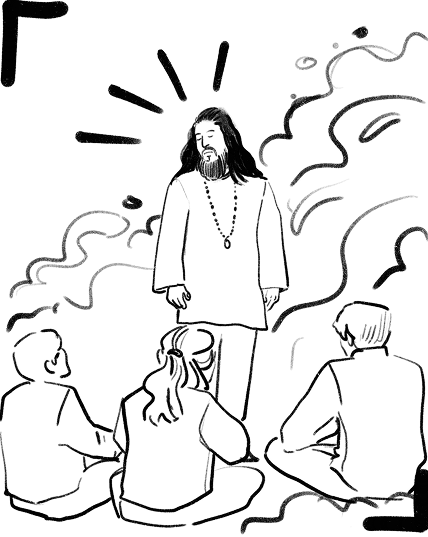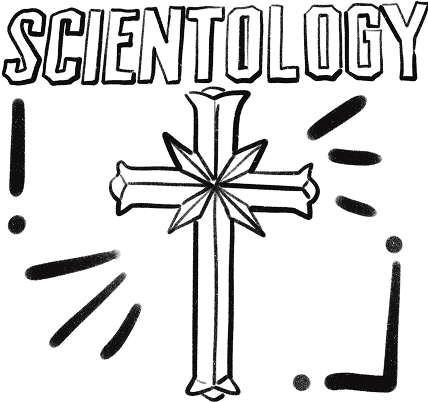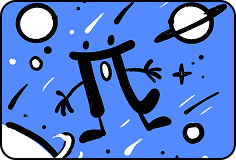Category: Cognitive technologies
Sectology: Critical Thinking Against Destructive Cults
“To think and believe with the same brain?”
Stanisław Jerzy Lec
Yesterday, some pleasant young people rang my doorbell and offered to talk about God. Remarkable, isn’t it? Outside, the first quarter of the twenty-first century is coming to an end; scientific and technological progress is confidently carrying humanity into a happy tomorrow. We talk about quantum technologies, learn to coexist with artificial intelligence, and prepare to conquer Mars—yet the need for faith has not gone anywhere. You would think that all the knowledge of humankind is at our fingertips, that we only need to make the effort to learn, verify, and understand it. And yet, some people still prefer miracles to science.
Moreover, minds poisoned by postmodernism demand that, rejecting all evidence and critical thinking, we elevate the darkest and most absurd prejudices to the same pedestal as scientific knowledge. “I believe the Earth is flat,” they say, “I am an individual, and my opinion is just as valid and true as any other.” No scientific evidence can shake their faith.
But how can cold science help those who are grieving a loss, suffering from emotional trauma, or crushed by loneliness and low self-esteem? Rejecting psychiatry and psychotherapy, they find answers elsewhere—say, in conversations about God with smiling, kind people, quietly surrendering themselves into the suffocating embrace of a sect.
Sects are organizations built upon religious, ideological, or philosophical systems of belief. They are often splinters of larger religious teachings, inclined to exist in tension with society and to deny the social environment around them.
Not all sects are destructive cults. Remember the cartoon Chip ‘n Dale Rescue Rangers? Admirers of Gadget Hackwrench’s radiant image are harmless geeks. Another example of a benign parody faith is Pastafarianism, which mocks Abrahamic religions while upholding respect for the individual and encouraging critical thought. But such exceptions are rare.
The vast majority of sects are not about communication, support, or spiritual growth—they exist to extract profit through control over the minds and lives of their members. At first, they welcome you warmly, shower you with affection—“love bombing”—and then, little by little, take everything away.
Every person is free to choose their own beliefs and circle of communication. But beware if your new friends insist that their doctrine is the only true one, deny secular laws and society, forbid the use of medical care or scientific progress, demand unquestioning obedience to a leader, prohibit communication with relatives, or ban all external sources of information.
Many religious groups cannot be directly identified as destructive sects—such accusations require a court ruling. However, we can show on what principles destructive cults were built and what harm they caused before being banned by law in various countries.
Aum Shinrikyo (Japan)
Let’s begin with Aum Shinrikyo, one of the most notorious and dangerous cults in the world. Its story began in Japan in the 1980s, when a partially blind massage therapist named Chizuo Matsumoto blended elements of Buddhism, Hinduism, Christianity, and science fiction to create a new teaching. He renamed himself Shoko Asahara and declared himself Christ and an enlightened master.
The core of Aum Shinrikyo’s doctrine was: “The world is doomed to apocalypse, and only the chosen members of Aum will survive.” “Chosen” status was attained through meditation, hypnosis, sensory deprivation, sleep deprivation, and hallucinogens. Followers handed over all their property to the cult and lived in isolated communes, cutting off all external ties. Attempts to leave were punished by kidnapping, torture, and even murder.

Aum Shinrikyo didn’t just predict the apocalypse—it actively tried to bring it about. The cult’s laboratories developed biological weapons and later produced the nerve agent sarin.
The cult used sarin twice, killing 21 people and injuring more than 6,500. After the 1995 Tokyo subway attack, Japanese police conducted massive raids, discovering labs, weapons caches, and even an aircraft.
Asahara was arrested in July 1995, sentenced to death in 2004, and executed on July 6, 2018, along with other top leaders. Today, Aum Shinrikyo is recognized as a terrorist organization and banned in most countries.
The White Brotherhood (Ukraine)
Apocalypse, mixing of religions, and self-deification—these three pillars support many destructive cults. A vivid example is The White Brotherhood, which emerged in Ukraine in the early 1990s.
The group called itself a “spiritual community,” combining elements of Christianity, Hinduism, esotericism, theosophy, and apocalypticism. Its leaders, Yuriy Krivonogov and Marina Tsurumova, proclaimed themselves “Teachers,” “Followers of Christ,” “God the Father,” and “God the Mother,” “the Incarnation of the Virgin Mary.” They came to save the chosen ones from the approaching end of the world in 1993.

Followers were told to cut ties with family, donate all property for the construction of the “New Jerusalem,” dress in white, and believe, believe, believe.
The Brotherhood planned to meet the apocalypse loudly. In August 1993, they seized a building on Lva Tolstoho Street in central Kyiv, preparing for “cosmic ascension.” They believed their stockpile of explosives would help their bodies “rise to the light ship.”
Authorities intervened. On August 19, 1993, Ukrainian special forces stormed the building—no one died, around 60 people were detained, including the leaders. Krivonogov and Tsurumova were convicted of forming an illegal armed group, possession of weapons, and incitement to violence. The organization was dissolved.
The Peoples Temple (USA)
What the White Brotherhood failed to do, the Peoples Temple accomplished in 1978. It began as a progressive Christian congregation. Founded in 1955, its members advocated racial equality, helped the poor, and fought for social justice. Its leader, Jim Jones, was seen as a humanitarian and reformer—until he declared himself the reincarnation of Christ, Buddha, and Lenin.
The story soon followed the classic cult pattern: banning family contact, confiscating passports, and punishing “betrayal.” In the 1970s, fearing investigation by media and authorities, Jones relocated with thousands of followers to Guyana, South America, where he founded the isolated commune Jonestown.

There, he began conducting “White Nights,” forcing followers to drink liquid supposedly poisoned with cyanide.
When U.S. congressman Leo Ryan traveled to Guyana to investigate complaints from relatives of cult members, he and several others were murdered.
Afterward, Jones proclaimed: “It’s time to die with dignity.”
All members—including children—were ordered to drink a cyanide-laced fruit drink. Those who resisted were shot or force-fed poison. Jones then shot himself.
The tragedy claimed 918 lives, including 304 children, elderly people, and those with disabilities.
The Order of the Solar Temple (France, Canada, Switzerland)
If you think wealthy people don’t join cults, you’re mistaken. The Order of the Solar Temple attracted only the elite—doctors, aristocrats, businessmen—and operated legally, owning luxurious estates.
This was not a traditional religion but a blend of esotericism and mysticism, borrowing Templar symbols. Leaders Joseph Di Mambro and Luc Jouret claimed to receive revelations from “invisible masters” from the Orion constellation and called themselves the reincarnations of Jesus Christ and Joan of Arc.

The “invisible masters” declared that Earth was a dirty, dying planet doomed to destruction, and that chosen souls must leave their bodies and migrate to Sirius.
The Solar Temple carried out three waves of mass deaths. In total, 74 people—including women and children—died. Many were murdered against their will; forensic evidence showed strangulation and restraints.
Di Mambro and Jouret committed suicide in 1994, leaving behind messages stating: “We are not dying. We are going to Sirius. Our physical bodies are but shells.”
Church of Almighty God (China)
In 1991, a Chinese woman named Zhao Weishan proclaimed that Jesus Christ had returned as a woman. She called herself “Female Christ” or “God the Mother,” preaching the coming apocalypse and judgment upon unbelievers—defined as everyone outside her sect.
The cult used aggressive online recruitment with fake identities and psychological manipulation. Converts were required to abandon their former lives and surrender all possessions to the organization.

There are documented cases of kidnapping, torture, and murder of defectors and nonbelievers. Chinese authorities accuse the group of ritual killings, incitement to violence, fraud, and abductions.
At its peak in the 2000s, the cult reportedly had 1–2 million followers. Despite being banned, it still operates underground and online.
The Church of Almighty God is a destructive religious movement that uses Christian terminology while preaching doctrines alien to both Christianity and basic moral norms. It is banned in many countries due to the danger it poses to human life and mental health.
Church of Scientology (USA)
Yes, Scientology is considered a destructive cult and is banned in several countries for financial exploitation and psychological abuse.
It began with Dianetics: The Modern Science of Mental Health, a book by science fiction writer L. Ron Hubbard. From this work emerged the Church of Scientology, which teaches that humans are immortal spiritual beings—“thetans”—trapped in bodies. All problems, fears, and failures are caused by “engrams,” painful memories from this and past lives.

Through “auditing” sessions, a person answers questions while holding an “E-meter” (similar to a lie detector). Scientologists claim this process clears the mind and grants superhuman abilities.
Scientology is one of the most expensive religions in the world. Each auditing session costs hundreds of dollars per hour. Reaching the highest levels can cost between $300,000 and $1,000,000. Members sign billion-year contracts, pledging loyalty even after death.
The Church aggressively pursues debts and donations, operating like a collection agency under the pretext of “saving humanity.” Dissenters face forced labor, 14-hour workdays, meager food, and constant humiliation. The motto: “If you don’t pay, you’re obstructing the salvation of the world.”
To defend its image, Scientology files thousands of lawsuits against critics and former members while using celebrity followers—Tom Cruise, John Travolta—for publicity. Officially, the church claims 8 million adherents; independent estimates suggest 50,000–100,000 active members.
In France, Scientology has been declared a “sectarian organization causing harm” and fined €600,000 in 2009 for fraud.
Jehovah’s Witnesses (USA)
Let’s return to those pleasant young people and their conversations about God. They always have colorful brochures, and if you’re not ready to talk today, they’ll gladly come back tomorrow—or next week, or next year.
Jehovah’s Witnesses is an international religious movement founded in the late 19th century in the U.S. According to the organization itself, it has over 8 million active preachers in 240 countries.
Their doctrine teaches that there is only one God—Jehovah. The Trinity is rejected as a pagan idea. Salvation is possible only for 144,000 chosen ones who will live in heaven; other righteous people will live eternally on a restored Earth. Jehovah’s Witnesses deny the existence of hell and claim the end times began in 1914. Soon, Armageddon will come, destroying all governments and religions except theirs.

Their methods are typical of destructive cults, though they don’t promote violence: followers refuse blood transfusions even in life-threatening cases, reject military service and voting, and must preach for 70 hours a month. Access to external information is restricted as “the work of the Devil.”
Within the community, strict discipline reigns—doubt and criticism of leadership are forbidden. Those who disobey are shunned, even by family.
Jehovah’s Witnesses reject the label “sect,” calling themselves the only true Christian organization.
Their activities are banned in Russia, China, Saudi Arabia, and North Korea. In Germany and France, they are under government surveillance as a potentially destructive movement.
The cults described here are only the tip of the iceberg. Even a brief account of all banned sects in the world would fill an entire book. Meanwhile, hundreds of groups still operate today, growing in power under the radar of law enforcement.
Anyone can fall under the influence of a destructive cult—even public figures. Among celebrities reported to have been involved in cults or sect-like groups are: Tom Cruise, John Travolta, Michelle Pfeiffer, Ellen DeGeneres, Joaquin Phoenix, Rose McGowan, David Arquette, Patricia Arquette, Christina Aguilera, Winona Ryder, Glenn Close, Lisa Marie Presley, Miley Cyrus, Ryan Gosling, Toni Braxton, Amy Adams, Val Kilmer, Fyodor Chistyakov, Talgat Nigmatulin, Jeremy Spencer, Igor Sorin, and Andrey Tikhonov. Many have spoken publicly about the trauma of their experiences and have criticized such organizations.
Each of us decides how to live our own life. But we must remember: paying for other people’s illusions often costs our health, property, and even life. Knowledge, perhaps, is the only form of faith that does not tolerate blind followers.
We scatter the fog of guesses with the beam of scientific truth.
Thank you!




